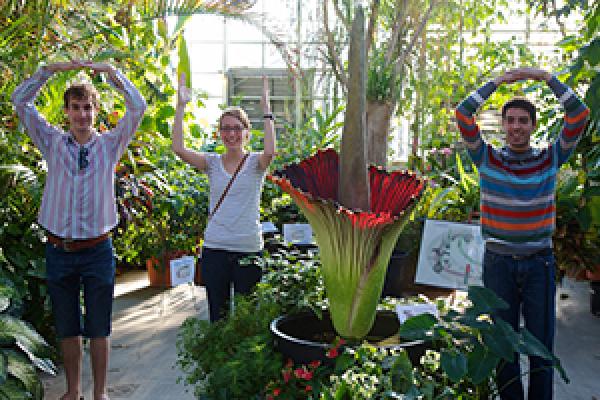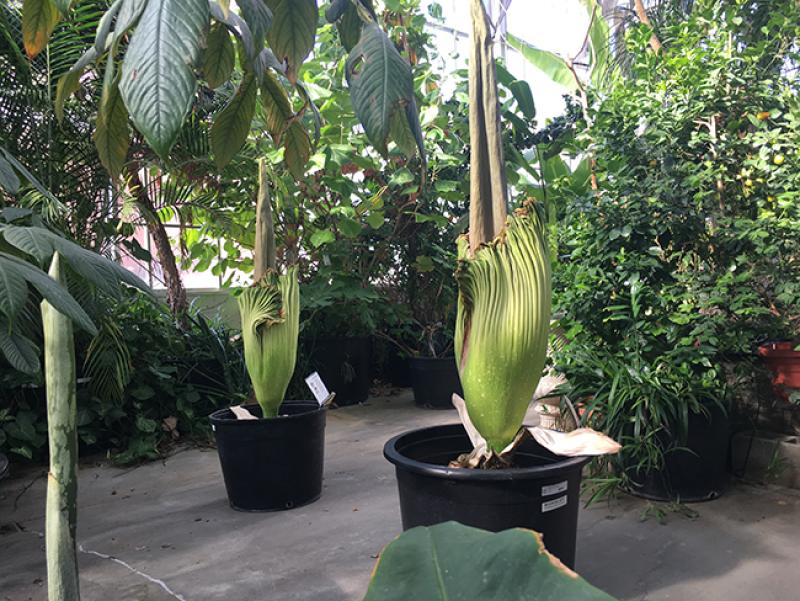Titan Arums at Biological Sciences Greenhouse

It’s been five years since Ohio State’s Biological Sciences Greenhouse has seen a titan arum bloom, but this year the greenhouse is expected to welcome two at once.
This gigantic plant, also known as the corpse flower, is unique and strangely wonderful. It is one of nature’s true wonders, boasting the plant kingdom’s largest unbranched inflorescence (flower structure). In the wild, they grow only in the tropical rainforests of Sumatra, and even there, they have always been uncommon.
Corpse flowers bloom intermittently, with initial blossoms appearing seven to 10 years after they have been planted. The flower’s moniker comes from the rotting meat smell it gives off once it opens, a survival technique designed to attract pollinators in the form of scavenging insects.

Titan arums "Maudine" (left) and "Scarlet" in the early stages of blooming. Ohio State Biological Sciences Greenhouse; July 19, 2018
The plant’s blooming schedule is completely unpredictable. In cultivation, the average recorded height of an inflorescence is roughly 5 feet, and the largest was more than 9 feet. In their natural habitat, titan arums can soar to 20 feet.
“The titan arum is a great plant science teaching tool with its various life stages, flower size and unique compounds,” said David Snodgrass, coordinator of the Biological Sciences Greenhouse.
We are also serving as a repository for its genetics, as it is listed as vulnerable in its native habitat of western Sumatra, Indonesia, due to deforestation.”
